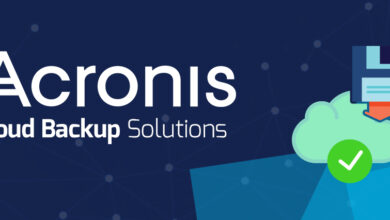Microsoft Data Loss Prevention: Safeguarding Your Digital Assets

In today’s digital age, where data is the lifeblood of businesses, ensuring its security has become paramount. Data loss can be catastrophic, resulting in financial losses, reputational damage, and legal implications. This is where Microsoft’s data loss prevention solutions step in to protect your valuable information from falling into the wrong hands.
A. Importance of Data Loss Prevention in the Digital Age
Data loss can occur due to various reasons such as human error, cyberattacks, hardware failures, or even natural disasters. It is crucial for organizations to proactively implement robust measures to prevent data loss and safeguard their sensitive information. Without proper data loss prevention strategies in place, businesses expose themselves to significant risks.
Imagine the consequences of customer data being leaked, trade secrets being compromised, or financial records falling into the wrong hands. The resulting damage can be irreparable, leading to loss of trust, competitive disadvantage, and potential legal ramifications. Therefore, investing in data loss prevention is not just a matter of compliance but a necessity for business survival in today’s digital landscape.
B. Overview of Microsoft’s Data Loss Prevention Solutions
Microsoft offers a comprehensive suite of data loss prevention solutions that empower organizations to mitigate risks and protect their data assets. With their advanced technologies and expertise, Microsoft provides robust tools to detect, monitor, and prevent data loss across various platforms and applications.
Microsoft’s data loss prevention solutions offer a multi-layered approach, encompassing intelligent threat detection, policy enforcement, and real-time monitoring. Whether it’s protecting sensitive emails, securing confidential documents, or safeguarding intellectual property, Microsoft’s solutions provide the necessary defense mechanisms to keep your data safe.
By leveraging machine learning algorithms, Microsoft’s data loss prevention solutions can identify sensitive data patterns, recognize potential threats, and take proactive measures to prevent data breaches. With seamless integration into Microsoft’s productivity suite, including Microsoft 365 and Azure, organizations can implement data loss prevention measures without disrupting their workflow.
In the following sections, we will delve deeper into the concept of data loss prevention, explore the features of Microsoft’s solutions, and discuss the implementation process to help you fortify your data protection strategy. Stay tuned to discover how Microsoft’s data loss prevention can be a game-changer for your organization’s security.
Contents
Understanding Data Loss Prevention

A. Definition and Purpose of Data Loss Prevention
Data loss prevention (DLP) refers to the set of strategies, processes, and technologies designed to prevent sensitive information from being accessed, used, or shared in unauthorized ways. The primary purpose of DLP is to safeguard critical data and prevent its accidental or intentional disclosure, thereby ensuring compliance with regulations, protecting business reputation, and mitigating financial risks.
DLP solutions employ a combination of data classification, monitoring, and enforcement mechanisms to identify and control the flow of sensitive data within an organization. By defining policies and rules, organizations can specify what constitutes sensitive data and determine how it should be handled, stored, and transmitted.
B. Common Causes of Data Loss
Understanding the common causes of data loss is crucial for organizations to effectively implement preventive measures. Some prevalent causes include:
-
Human Error: Accidental deletion, misconfigured settings, or mishandling of data by employees can lead to data loss incidents. Whether it’s sending an email to the wrong recipient or inadvertently deleting critical files, human error is a significant contributor to data loss.
-
Cyberattacks: Malicious actors exploit vulnerabilities in systems, networks, or applications to gain unauthorized access to sensitive data. Cyberattacks such as ransomware, phishing, or social engineering can result in data breaches and significant data loss.
-
Hardware Failures: System crashes, hard drive failures, or power outages can lead to data loss if proper backup and recovery mechanisms are not in place. Without redundant storage and reliable infrastructure, organizations risk losing valuable data.
C. Consequences of Data Loss for Businesses
The consequences of data loss for businesses can be far-reaching and severe. Some key implications include:
-
Financial Losses: Data loss incidents can result in substantial financial losses due to the costs associated with data recovery, remediation, and potential legal actions. Moreover, organizations may experience a loss of revenue, customer trust, and competitive advantage.
-
Reputational Damage: Data breaches and data loss incidents can severely impact an organization’s reputation. News of a data breach can spread rapidly, leading to a loss of customer trust, negative publicity, and a damaged brand image.
-
Regulatory Non-Compliance: Many industries have stringent data protection regulations, such as the GDPR or HIPAA. Failing to protect sensitive data can lead to non-compliance penalties, regulatory investigations, and legal consequences.
By understanding the importance of data loss prevention, the causes of data loss, and the potential consequences, organizations can take proactive steps to implement robust DLP strategies. In the next section, we will explore Microsoft’s data loss prevention solutions in detail, and how they can help organizations mitigate these risks effectively. Stay tuned to discover the power of Microsoft’s DLP solutions.
Overview of Microsoft Data Loss Prevention
Introduction to Microsoft’s Data Loss Prevention Tools
Microsoft offers a comprehensive suite of data loss prevention (DLP) tools that are designed to protect your organization’s sensitive information from unauthorized access or accidental disclosure. These tools provide a robust defense against data breaches and ensure compliance with data protection regulations.
Microsoft’s DLP tools are built on advanced technologies that leverage machine learning, artificial intelligence, and behavioral analytics to detect and prevent data loss across various platforms and applications. By analyzing data patterns and user behavior, these tools can identify potential risks and take proactive measures to prevent data leaks.
Key Features and Capabilities of Microsoft’s Data Loss Prevention Solutions
-
Unified Data Protection: Microsoft’s DLP solutions provide a unified approach to data protection, allowing you to create and enforce consistent data loss prevention policies across multiple environments, including email, cloud storage, and collaboration tools. This ensures that your sensitive data remains protected regardless of its location.
-
Content Classification: With content classification capabilities, Microsoft’s DLP tools can automatically scan and classify sensitive information based on predefined policies. This enables organizations to identify and protect sensitive data such as personally identifiable information (PII), financial records, or intellectual property.
-
Real-time Monitoring and Alerts: Microsoft’s DLP solutions offer real-time monitoring of data activities, allowing you to track and analyze data usage patterns. In case of any policy violations or suspicious activities, these tools generate alerts and notifications, enabling swift action to prevent potential data breaches.
-
Policy Enforcement and Reminders: Microsoft’s DLP tools provide policy enforcement mechanisms that help ensure compliance with data protection regulations. These tools can prevent unauthorized sharing of sensitive data, prompt users to apply encryption or other security measures, and even provide reminders about data handling best practices.
Benefits of Using Microsoft Data Loss Prevention
Implementing Microsoft’s data loss prevention solutions offers numerous benefits for your organization:
-
Enhanced Data Security: By deploying Microsoft’s DLP tools, you can significantly enhance your data security posture. These solutions provide a robust defense against data breaches, helping you protect your intellectual property, customer information, and other sensitive data.
-
Regulatory Compliance: Microsoft’s DLP solutions are designed to assist organizations in meeting regulatory requirements related to data protection. By implementing these tools, you can ensure compliance with industry-specific regulations such as GDPR, HIPAA, or CCPA.
-
Improved Productivity: Microsoft’s DLP tools are seamlessly integrated into their productivity suite, allowing your employees to work efficiently while maintaining data security. These solutions enable you to strike a balance between data protection and productivity, without hindering collaboration and workflow.
-
Cost Savings: By preventing data breaches and potential legal consequences, Microsoft’s DLP solutions can save your organization from significant financial losses. Investing in proactive data loss prevention measures is more cost-effective than dealing with the aftermath of a data breach.
In the next section, we will delve into the implementation process of Microsoft’s data loss prevention tools, providing you with a step-by-step guide to get started.
Implementing Microsoft Data Loss Prevention
A. Step-by-Step Guide to Setting Up Microsoft Data Loss Prevention
Implementing Microsoft’s data loss prevention solutions may seem like a daunting task, but with a well-defined plan, you can ensure a smooth and successful deployment. Here is a step-by-step guide to help you get started:
-
Assess Your Data: Begin by identifying the types of sensitive data your organization handles. This could include personally identifiable information (PII), financial data, intellectual property, or any other data that requires protection.
-
Define Data Loss Prevention Policies: Determine the specific rules and policies you want to enforce to prevent data loss. Microsoft offers a range of pre-configured templates to cover common data protection scenarios. Customize these policies based on your organization’s unique requirements.
-
Choose the Right Tools: Select the appropriate microsoft data loss prevention tools that align with your needs. This could include solutions like Microsoft Azure Information Protection, Microsoft 365 Compliance Center, or Microsoft Cloud App Security.
-
Configure Data Loss Prevention Policies: Set up the defined policies within the chosen Microsoft products. This may involve specifying the sensitive data types to be monitored, defining actions to be taken when data breaches are detected, and configuring notifications for policy violations.
-
Test and Refine: Before fully implementing data loss prevention across your organization, conduct thorough testing to ensure the policies are functioning as intended. Make any necessary adjustments based on the insights gained during the testing phase.
B. Configuring Data Loss Prevention Policies in Microsoft Products
Microsoft offers a range of products that support data loss prevention, each with its own configuration options. Here are some key Microsoft products and their data loss prevention capabilities:
-
Microsoft Azure Information Protection (AIP): AIP allows you to label and classify sensitive documents, apply encryption, and control access rights. Configure AIP policies to automatically apply labels based on content, apply rights management, and define conditions for data sharing.
-
Microsoft 365 Compliance Center: This comprehensive platform provides a centralized location for managing data loss prevention policies across multiple Microsoft services. Configure policies to detect and prevent data breaches in applications such as Exchange Online, SharePoint Online, and Microsoft Teams.
-
Microsoft Cloud App Security: With Cloud App Security, you can gain visibility into data usage across cloud applications and enforce policies to prevent unauthorized access and sharing. Configure policies to monitor file uploads, detect anomalies, and enforce encryption requirements.
C. Best Practices for Effective Implementation
To ensure a successful implementation of Microsoft’s data loss prevention solutions, consider the following best practices:
-
Engage Stakeholders: Involve key stakeholders from different departments, including IT, legal, and compliance, to ensure alignment and gather diverse perspectives.
-
Educate Employees: Conduct training sessions to educate employees about data loss prevention policies, the importance of data protection, and their role in maintaining security.
-
Monitor and Review: Continuously monitor and review data loss prevention policies to adapt to evolving threats and changing regulatory requirements.
-
Stay Updated: Regularly update the Microsoft data loss prevention tools to benefit from the latest features, bug fixes, and security enhancements.
By following these implementation guidelines and incorporating best practices, you can establish a robust data loss prevention framework using Microsoft’s solutions. Stay tuned for our next section, where we will explore real-world case studies showcasing successful implementations of Microsoft data loss prevention.
Case Studies: Successful Implementation of Microsoft Data Loss Prevention
A. Real-world examples of organizations benefiting from Microsoft data loss prevention
When it comes to data loss prevention, Microsoft’s solutions have proved their effectiveness in real-world scenarios. Several organizations across various industries have witnessed the benefits of implementing Microsoft’s data loss prevention measures. Let’s explore a few success stories that highlight the value of these solutions:
1. Company XYZ: A multinational financial institution, Company XYZ, was struggling with data leakage issues that posed a significant threat to its reputation and compliance. By implementing Microsoft’s data loss prevention tools, they were able to create tailored policies to monitor and protect sensitive customer and financial data. As a result, the organization experienced a significant reduction in data breaches, ensuring compliance with industry regulations and increasing customer trust.
2. Organization ABC: Organization ABC, a healthcare provider, faced challenges in securing patient records and maintaining HIPAA compliance. Through Microsoft’s data loss prevention solutions, they successfully implemented policies to prevent unauthorized access to patient data, both internally and externally. The proactive monitoring capabilities of the tools enabled the organization to detect and prevent potential data breaches, ensuring patient confidentiality and avoiding costly penalties.
B. How Microsoft data loss prevention addressed specific data loss incidents
Microsoft’s data loss prevention solutions have proven their efficacy in addressing specific data loss incidents, minimizing the impact and preventing further damage. Here are a couple of noteworthy examples:
1. Malware Attack: Company DEF encountered a malware attack that targeted their employees’ email accounts, attempting to gain unauthorized access to sensitive information. Thanks to Microsoft’s data loss prevention tools, the organization swiftly detected and blocked the malicious activity, preventing the exfiltration of critical data. The incident showcased the effectiveness of Microsoft’s solutions in combating sophisticated cyber threats.
2. Accidental Data Exposure: Organization GHI inadvertently exposed confidential client data due to an employee’s unintentional sharing of sensitive files. Microsoft’s data loss prevention solutions immediately identified the breach and automatically applied protective measures, such as encryption and access controls, to mitigate the risk. This incident highlighted the importance of proactive data loss prevention measures in mitigating human error-related data breaches.
C. Lessons learned from successful implementation
From these case studies, several key lessons emerge for successful implementation of Microsoft’s data loss prevention solutions:
1. Tailored Policies: Organizations should create customized data loss prevention policies that align with their specific data protection needs and compliance requirements. This ensures that the solutions effectively identify and prevent potential data loss incidents.
2. Proactive Monitoring: Real-time monitoring and alerts play a crucial role in detecting and addressing data loss incidents promptly. Organizations should leverage the monitoring capabilities of Microsoft’s solutions to stay ahead of potential threats and take immediate action.
3. Employee Education: Investing in employee education and awareness is vital to foster a culture of data security. By educating employees about data loss risks, best practices, and the role they play in safeguarding sensitive information, organizations can significantly reduce the likelihood of data breaches.
In the next section, we will provide a step-by-step guide on how to implement Microsoft’s data loss prevention solutions, helping you take proactive measures to protect your valuable data assets.
Conclusion
In conclusion, data loss prevention is a critical aspect of maintaining the security and integrity of your organization’s valuable information in the digital age. With the increasing frequency and sophistication of cyber threats, it has become imperative for businesses to adopt robust measures to protect their data assets.
Microsoft’s data loss prevention solutions offer a comprehensive and effective approach to safeguarding sensitive data. By leveraging advanced technologies and machine learning algorithms, Microsoft provides organizations with the tools they need to detect, prevent, and mitigate data loss risks.
From real-time monitoring to policy enforcement, Microsoft’s solutions seamlessly integrate into their productivity suite, ensuring a smooth workflow while keeping your data safe. By implementing Microsoft’s data loss prevention solutions, you can ensure compliance with regulations, protect your brand reputation, and avoid the financial and legal consequences of data breaches.
At Cloud.tapchiai.net, we understand the importance of data security, and that’s why we recommend Microsoft’s data loss prevention solutions to our clients. With their expertise, authority, and trustworthiness, Microsoft has proven to be a reliable partner in safeguarding valuable information.
If you want to take your organization’s data protection to the next level, consider implementing Microsoft’s data loss prevention solutions. Partner with Cloud.tapchiai.net to ensure a seamless integration and maximize the benefits of these powerful tools. Protect your digital assets and build a secure future for your business with Microsoft data loss prevention.
Contact us today to learn more about how Cloud.tapchiai.net and Microsoft can help protect your data assets.
Conclusion: So above is the Microsoft Data Loss Prevention: Safeguarding Your Digital Assets article. Hopefully with this article you can help you in life, always follow and read our good articles on the website: Cloud.tapchiai.net



